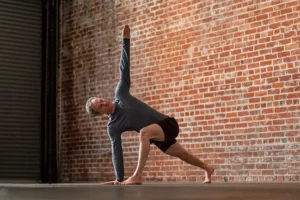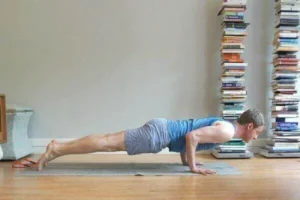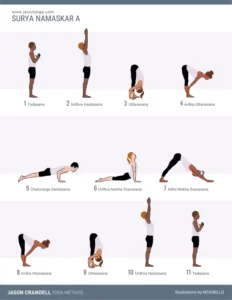In modern yoga, we use the word “core” incessantly. But, what does the term “core” really mean and what do our students actually hear when we use the word? These questions don’t exactly keep me awake at night, but they do gnaw at me. Granted, I’m obsessed with clear, accurate, and accessible language, but I’m sure I’m not the only one. All yoga teachers want their students to understand what they’re saying and all yoga students want to learn how to use their bodies skillfully and effectively.
Also, the word “core” evokes mixed feelings for people. After many years of teaching I’ve seen that most people think their core is flawed in some way—they either think it’s too big or too weak or both. They carry a lot of emotion and insecurity attached to it. Since the core is so often entangled with our self image, I think it’s even more important that try to understand how it works. My hope is that by understanding its complexity we can start to appreciate all that it does for us instead of simply focusing on perceived flaws.
So, here you go:
The Ultimate Illustrated Guide to Your Core in Yoga Practice, Part I.
I’ll post Part II shortly, which will focus on what I call the complementary muscles and access points to your core. I’ll also be publishing several Pose Notebooks and Practice sequences that focus on the core soon—so make sure to follow me on Instagram and register for my email list so you know when these are available.
A quick note: These images are courtesy of Paul Roache, MD.
The Primary Components of Your Core Muscles Anatomy
There are four components of the core. When I use the word “core,” I’m referring to a combination of the following muscle groups:
The pelvic floor muscles: These muscles make up the floor of your core. They line the bottom of your pelvis and support your abdominal organs. When you engage these muscles in yoga, you create a subtle lift in your center that helps lengthen your spine.
The abdominal muscles: You can think of these as the walls of your core. Wrapping around the entire circumference of your abdomen, these muscles contain your abdominal organs, support your spine, and provide mobility to your mid-section. In yoga, the abdominals support your lower back and integrate the motion between your spine, pelvis, and ribs.
The illiopsoas: Take a look at the picture below and you’ll see the illiopsoas (that’s a combination of the psoas and illacus muscles) at the very center of your core. I call the illiopsoas the “core” of your “core.” In yoga, the iIlliopsoas works with your other hip flexors to support your standing poses, enhance your forward bends, and support the abdominals in postures like Navasana and arm balances.
The diaphragm: Geographically, the diaphragm is the very top of your core. This diaphragm is the dominant muscle involved in breathing. And, I’m sure you would agree, that breathing is the “core” practice in all forms of hatha yoga!
See also Yoga Podcast: Aspects of the Core We Tend to Ignore
The Primary Components of Your Core, {illustrated}
I love this image of the core because it perfectly illustrates the relationship between the abdominals, pelvic floor, and illiopsoas. By looking at the cross-section of the abdominals, (consisting of the transverse abdominus, obliques, rectus abdominus and quadratus lumborum muscles), you can see how this muscle group wraps around the entire abdomen. Here it is, the primary components of your core, minus the diaphragm (depicted a few illos below).
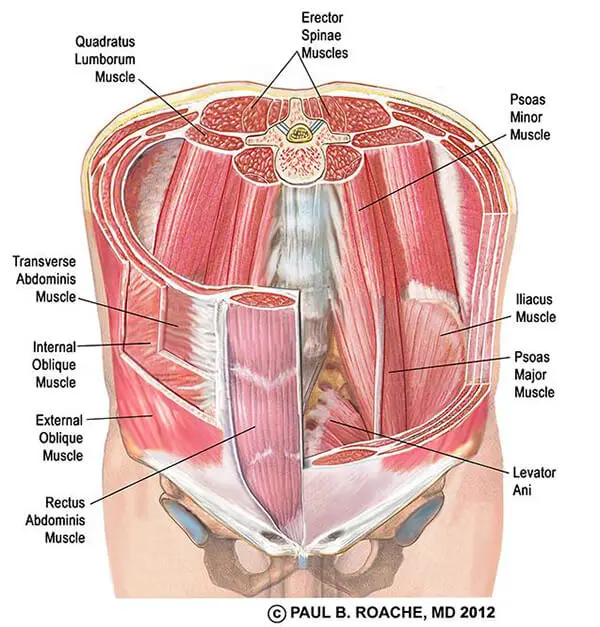
Here’s another great view of the core muscles anatomy. It’s a little overwhelming with all of the labels, but it allows you to look down into your core from above. You can see the circumferential nature of your core. Notice how the abdominals wrap around the circumference and the pelvic floor muscles line the bottom of your core. The illiopsoas blends into the sides and back of your core.
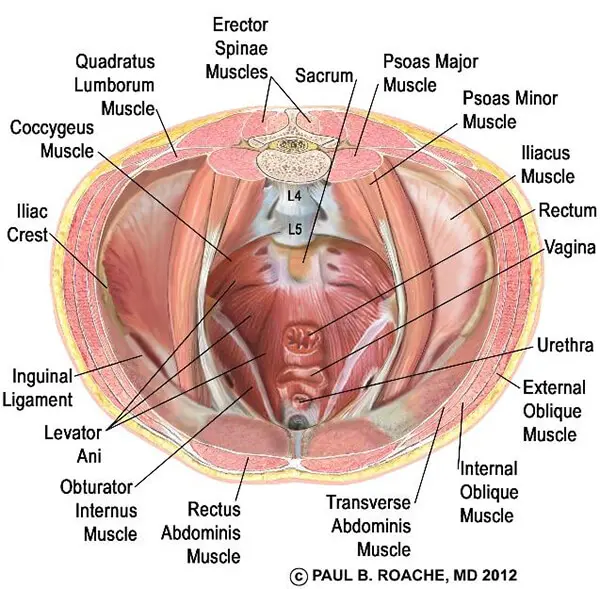
The image below is my favorite illustration of the diaphragm and illiopsoas. In this view you can see that the diaphragm is like a domed roof that forms the top of your core, while your Illiopsoas forms the muscular center of your core.
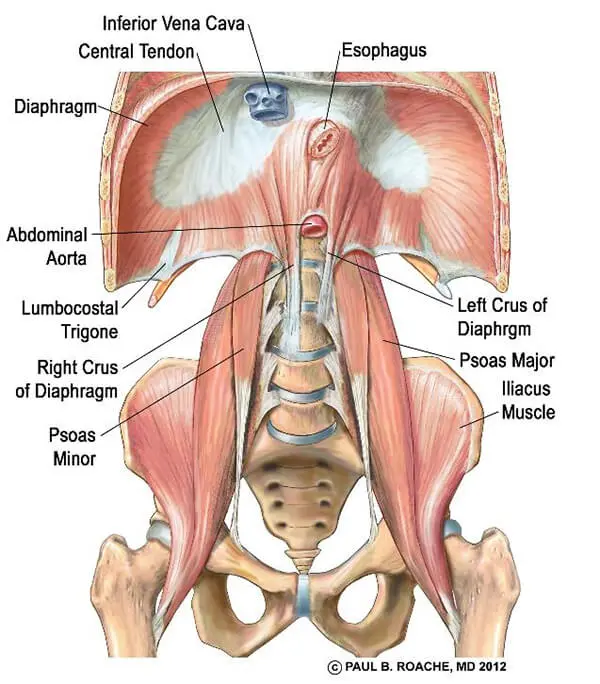
Finally, take a slow, deep breath and remember that in the big picture your core isn’t just muscles. In addition to the roles they play in yoga, your core muscles provide a dynamic, living, breathing house for your digestive and reproductive organs. In a culture that’s six-packed obsessed, it’s normal to feel insecure about our core now and then. But, if you step back and appreciate the incredible complexity of this region—how it literally supports your life—you can’t help but be grateful.
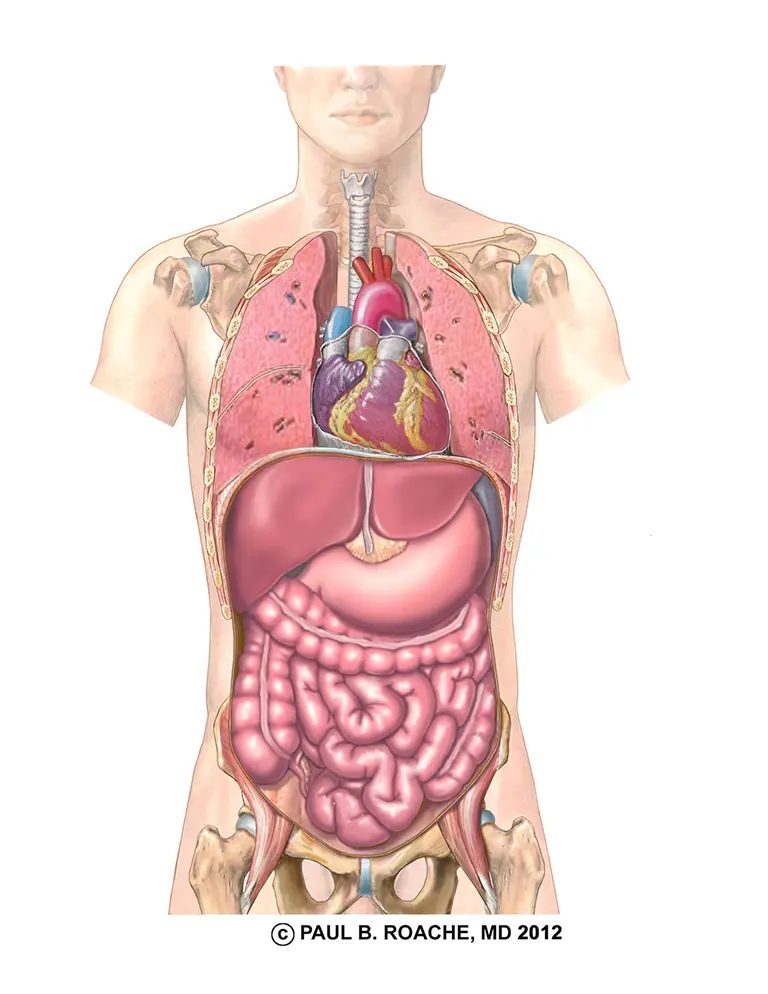
I hope this illustrated guide gives you insight into your core and helps you teach your students about this region with greater confidence and clarity. You can find Yoga + Your Core, Part II here. Be sure to stay tuned for more upcoming core-focused practice posts. You can subscribe to our newsletter so you don’t miss any upcoming articles!
